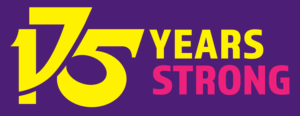A distinctive feature of the EIS is that it organises all teachers at all grades, from early years through to higher education. As well as its internal fora, such as the headteacher and depute[1]headteacher network, and networks for instrumental music teachers and educational psychologists, it has two self-governing associations covering higher education and further education.
EIS-ULA (the University Lecturers Association) organises mainly in the new universities: the polytechnics or central institutions given university status by the 1992 Further and Higher Education Act. Although it is small in relation to the UK’s UCU, its link to the EIS – and its uniquely Scottish perspective – make it a vital voice in higher education. And it benefits from the high overall profile of the EIS when it comes to fighting and lobbying for the interests of lecturers in Scotland.
The Further Education Lecturers’ Association (FELA) is the only recognised trade union for college lecturers. Its character, like its story, is a distinctive one.
FELA’s character was, in a large part, formed by what has happened to FE colleges over the last three decades.
It began in 1992, when the Conservative government decided that colleges would be taken out of local authority control. Previously, they’d been run similarly to schools: under the aegis of the local authority, and with a former lecturer promoted to principal.
From 1992, however, colleges became semi-privatised bodies, run by boards of management. These boards – and the principal – now tended to come from the business sector, rather than from within FE.
Under the new system, colleges were in direct competition with one another. This meant the end of national bargaining.
As a result, college principals felt they could operate with impunity. Some sacked large numbers of lecturers, then re-employed them on less-favourable terms. Lecturers found their holidays cut, or their sick-pay options curtailed.
Other colleges offered only paltry pay increases over the years. The outcome was a situation where lecturers in some colleges were paid thousands of pounds less than those in the college down the road – despite doing exactly the same job. By 2016, the gap between lecturers in the lowest-paid and highest-paid colleges was £14,000: the lowest pay was £26,000, and the highest £40,000.
The onus for negotiating better pay and conditions rested entirely with individual colleges’ EIS branches. Where colleges were well-organised, staff were able to press for better terms. This, however, came at a cost: often EIS reps were persistently victimised.
ACKNOWLEDGEMENTS:
Research, interviews and substantive writing:
Adi Bloom
Design and lay-out:
Stuart Cunningham and Paul Benzie
Additional writing and research:
EIS Comms Team and assorted staff members
Printed by:
Ivanhoe Caledonian, Seafield Edinburgh
Photography:
Graham Edwards, Mark Jackson, Elaine Livingston, Toby Long, Ian Marshall, Alan McCredie, Alan Richardson, Graham Riddell, Lenny Smith, Johnstone Syer, Alan Wylie


Thanks to the many former activists and officers who gave of their time to be interviewed and taken a stroll down memory lane. And of course a very special thanks to the EIS members who created this history through their activism and commitment to the cause of Scottish Education.
© 2022 The Educational Institute of Scotland